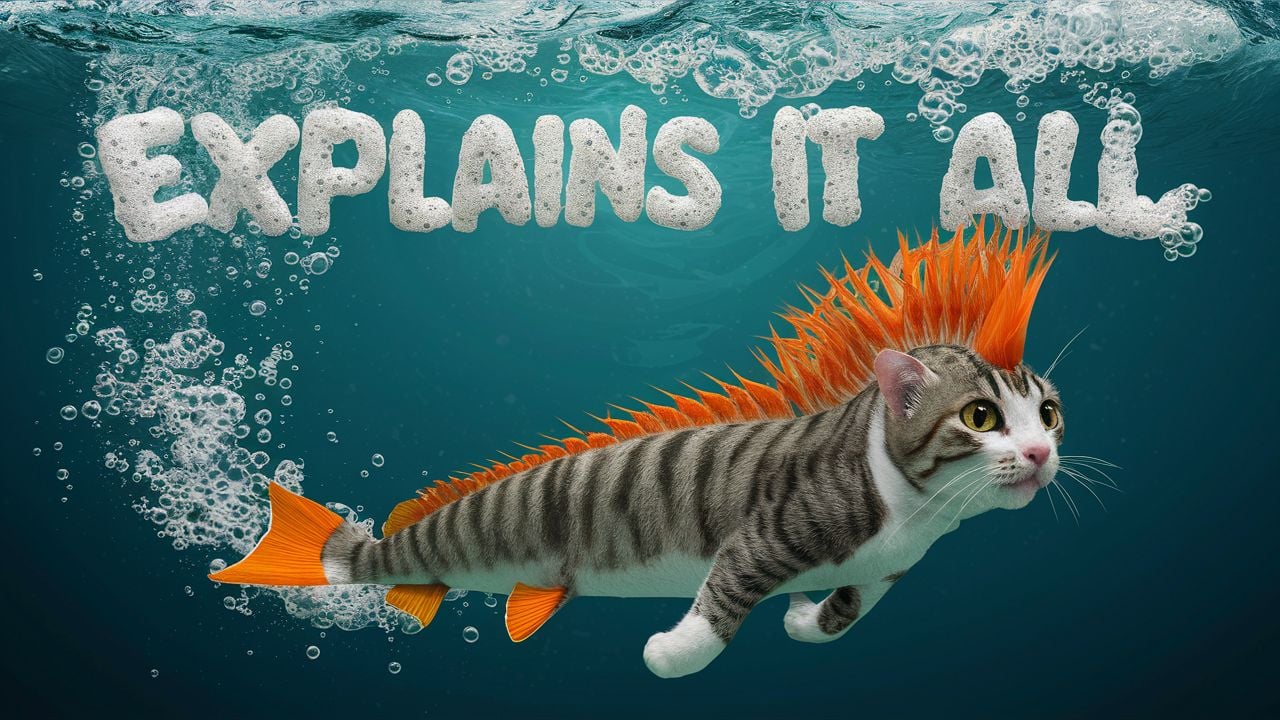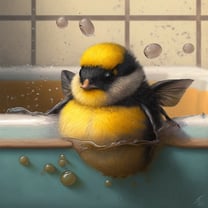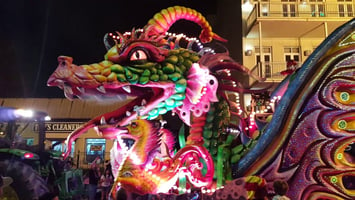Because Taylor Swift is a white (middle?) upper class to 1%er she is a face of capitalism,...
Disney's Infamous Tribal Representation in Peter Pan [Part D2]
Pull over, everybody: Disney’s adaptation of Peter Pan, which was shown on regular television when I was a child, really took the racism to the next level. Although the portion of the Disney film featuring and exploiting Native Americans is brief, its dehumanizing power is more impactful than Tinker Bell’s pixie dust (12).
In the cartoon, the Lost Boys made their first appearance when Peter took Wendy, John, and Michael Darling to Neverland (11). Pan says, “All right, men, go out and capture a few Indians.” (7). The Lost Boys and the Darlings sing "Following the Leader" as they walk in a quite military-esk fashion (11).
Wendy’s younger brother John chants, “We are off to fight the Injuns because he told us so,” — a statement that summarizes why white soldiers disrupted Native American cultures, because someone of higher power told them to. In this case, it was Peter Pan. John later refers to the Indians as “quite savage,” and elaborates by saying “the Indian is cunning but less intelligent…” right before they are captured. These descriptions are common assumptions about Native Americans, even today (12).
When the Lost Boys are captured by the Indians, Disney represents tribal life by showcasing individuals who represent every negative stereotype: Their skin is illustrated with a decidedly red hue. They are speaking in an unintelligible language, and saying “how” to greet each other. Malnourished-looking men with missing teeth wander in a slovenly manner. Fat and ugly, women with big noses are glaring and looking mean. Tiger Lily, a child, is sexualized, promiscuously dancing for the group of men, paying special attention to white leader, Peter (12).
This representation of the “Squaw” vs. “Indian Princess” stereotype, which Disney makes clear in the short screen time given to the tribe, has led to murder, rape, and violence against Native American/First Nations women and girls even today (13).
The Europeans marked Indian women as different from whites: “Old, poor, and “uncivilized” Indian women were depicted as “squaws.” Colonialists emphasized the poverty and hardship of Indian women, ridiculing Indian women for their silliness or grooming habits. They were often portrayed suffering at the hands of (drunk) Indian men. A second stereotype grew out of the fur trade. Any woman who considered herself daughter of a chief, and who married a white man or took the trappings of European civilization, might be called a “princess.” European notions of royalty transformed the degraded squaw into the noble savage princess, placing her firmly within the separate sphere above the “squaw” but still under white women (14).
In the Disney version of the story, Peter and the Lost Boys engage in constant mockery and appropriation of Native American culture and imagery by dancing, chanting, wearing headdresses and other exaggerated tropes (12).
Regardless of ancestry (or claims of), the point is that Lakota and Dakota scholars and activists have repeatedly spoken out that this behavior [wearing regalia] is unacceptable. These are sacred items, period. There is no understanding of what is sacred in the world of the culture industry. Decisions are made only to produce capital while embracing this demeaning visual narrative. Because American Indians are erased from the daily fabric of mainstream culture, voices on important matters are dismissed. American Indians are few in numbers. Allies vocal on these issues are even fewer in numbers. Hopkins writes, “Native appropriation is proof positive that Native voices have been largely excluded by mainstream media. It’s crucial that the Native media takes center stage in educating the public as to the reality of Native identity. Our truth must be told. The public should want to know our truth, because who we really are and what we have to offer is so much greater and more powerful than what it’s been told” (November 2013) (16).
The film’s absolute highest point of abomination is the song, “What Made Red Man Red?” which showcases exceptional ignorance, shameful stereotypes, and is highly derogatory (12). Lyrics:
Pan explicitly equates himself with the figure of the all-powerful white patriarch. He ends a discussion with the Indians by stating: ‘All is well. The Great White Father has spoken’ (Barrie, p. 63) (3). …By enacting the role of Great White Father, Pan makes a real bid for absolute authority over Wendy, the other white males on the island, and the island’s indigenous inhabitants who are positioned as his racial ‘others’ (3). This white hero image is strengthened when the Indian Chief’s punishment is prevented by Peter who rescues Tiger Lily from Captain Hook, the real kidnapper, and the Lost Boys, John and Michael are set free (11).
Disney released Peter Pan in 1953 and for generations children have been internalizing the overt racism shown in the cartoon. Though Native Americans are featured in approximately 15 min of the 77 min film, their portrayal is egregiously insensitive. The viewer (remember the target audience is children) cannot help but to pick up on the caricatures, slurs, and dehumanization of the tribe.
BUT
Starting March 2021 (just 68 years too late) the corporation issued a short advisory graphic encouraging viewer discretion: “This program includes negative depictions and/or mistreatment of people or cultures. These stereotypes were wrong then and are wrong now. Rather than remove this content, we want to acknowledge its harmful impact, learn from it and spark conversation to create a more inclusive future together.” Though the film remains on their streaming platform, and the offensive portions are left largely intact, the film was removed from profiles catagorized child (under 7 years old) (12).
Too Little, too late
These things matter. A common theme in children’s stories is fighting a bad-guy and winning. Drawing upon a wealth of letters to actors who had played the role [of Peter], research documents how, from the first performances, children identified with Peter as the representative of ‘good’ in this competition (3). On the other hand, the bad guy is prescripted as a racial minority (3).
The racial schema that emerges from this (white/black, good/bad, civilized/ savage) functions to render Peter as a representative of the white racial self – in other words as an effect of the white author’s and spectators’ location in the British racial order (3). Barrie’s references to swarthiness and savagery within the interplay of a game between ‘good’ versus ‘bad’ repeat the extra-textual terms of late-Victorian racial discourse (3).
Far from being innocent fun, when seen through postcolonial and feminist perspectives, the activities of Peter and his comrades represent the experiences of the British Empire (2). The misogyny present in Peter Pan is buttressing the colonialistic ideals of the time. …Reveals the imperial fantasy of manly racial supremacy as well as the elements that this fantasy repressed – namely, sexuality and an emotional need of women (p. 25). In order for men to conquer “lower” status people, someone must take care of daily logistics. Consequently, the play shows it as natural for Wendy, as a female, to dream of hearth and home. The Great White Father, however, must remain immune to any such desires, lest he be forced to abdicate the hedonist pleasures that his ‘manly racial supremacy’ yields him (3).
Sources:
1] https://disney.fandom.com/wiki/Lost_Boys
2] https://muse.jhu.edu/article/758591
3] https://www.researchgate.net/publication/231904832_Peter_Pan_and_the_White_Imperial_Imaginary
5] https://aahabershaw.com/2016/02/22/boyhood-manhood-and-peter-pan/
6] http://komunikata.id/index.php/komunikata/article/view/236
7] https://animatedmeta.wordpress.com/2014/12/06/peter-pan-and-gender-roles/
8] https://honors.libraries.psu.edu/files/final_submissions/4462
9] https://macsphere.mcmaster.ca/bitstream/11375/9569/1/fulltext.pdf
10] https://www.123helpme.com/essay/Gender-Roles-in-Peter-Pan-by-J-273202
11] https://disney.fandom.com/wiki/Lost_Boys
13] https://en.wikipedia.org/wiki/Stereotypes_of_Indigenous_peoples_of_Canada_and_the_United_States
15] https://apnews.com/article/super-bowl-native-american-mascot-chiefs-41397b038e03c01865d42a3f77766c98
17] https://www.ourkids.net/school/brief-history-of-boarding
18] https://pubmed.ncbi.nlm.nih.gov/30125077/
19] https://www.npr.org/transcripts/1129868151
20] https://scholarworks.seattleu.edu/cgi/viewcontent.cgi?article=1153&context=suurj
21] https://www.tbsnews.net/features/panorama/capitalism-racist-569746
23] https://www.refinery29.com/en-au/2023/06/11435466/blak-woman-complicated-relationship-taylor-swift





